Seattle Dental Care and hygiene
Routine Dental Care check-up and dental cleaning with your Seattle Dentist!
ROUTINE DENTAL CARE & ORAL HEALTH
Improve Your Dental Hygiene With Innovative Dentistry
We offer a variety of services designed to support your dental hygiene and overall health. Please choose an option below to get started.
Routine dental hygiene starts with daily brushing and flossing. These practices help remove much of the plaque and bacteria that accumulate on your teeth. However, it’s nearly impossible to eliminate all of it on your own. Your dental hygienist serves as a partner in achieving good oral health.
Visiting the dentist at least twice a year for professional cleanings can prevent tooth decay and periodontal (gum) disease. Based on the condition of your teeth and gums, our team of dentists may recommend visits.
What to expect at your check-up appointment:
- Visual evaluation of teeth, face, jaw and neck
- Digital images to check for cavities and other possible problems
- Gum disease evaluation
- Professional teeth cleaning and fluoride treatment
- Screening for oral cancer
Caring for your Smile and Dental Hygiene

Comprehensive Dental Evaluations
During your evaluation, your Seattle dentist checks for cracked, broken, or decayed teeth. They also examine any abnormal areas on your cheeks, gums, tongue, and roof of your mouth.
Since gum disease affects almost 50% of adults in the U.S. (Centers for Disease Control), we perform a comprehensive assessment during your exam. This helps us identify any signs of periodontal disease early on.
When addressed in its early stages, periodontal disease is manageable and possibly reversible. Since gum disease often shows minimal symptoms until it advances significantly, early evaluation is crucial. Our team will assist you in choosing the best treatment options for your condition.
Advanced Imaging Techniques
Your dentist may recommend digital X-rays and photographs to identify problem areas in your mouth. The type of images varies based on your situation. A full jaw x-ray, provides a comprehensive view of all structures in your mouth, including your jaw joint and sinuses.
In some cases, digital 3D imaging may be appropriate to determine the exact positioning of your teeth. Additionally, your dentist might use a special digital camera to take close-up pictures of your teeth or gums. This helps them identify and monitor any areas of concern. We also utilize intraoral cameras to provide live images during our examinations.
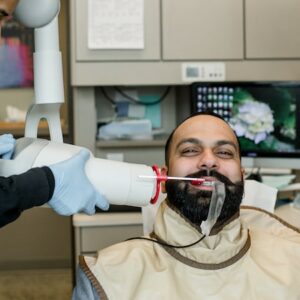
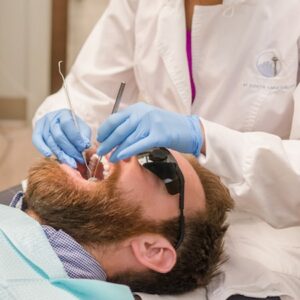
Fluoride Treatments - Risk Assessment
The American Dental Association (ADA) recommends fluoride treatments based on individual cavity risk. Our team evaluates whether your risk for cavities is low, moderate, or high according to ADA guidelines. Individuals with low risk typically receive fluoride treatment twice a year.
Those at moderate risk also receive fluoride twice a year along with a take-home fluoride product to further reduce cavity chances. For individuals at high risk for cavities, we may recommend fluoride treatment more than twice a year, a take-home fluoride product, and an antimicrobial rinse to combat cavity bacteria.
Thorough Dental Cleaning by Our Hygienists
All our hygienists are well-trained to perform thorough teeth cleaning. They remove plaque and tartar from your teeth before polishing them to eliminate stains and smooth the tooth surface.
In addition to hand-held techniques, our skilled hygienists use ultrasonic devices to deliver targeted treatments to hard-to-reach areas. These devices use ultrasonic vibrations to break down and move calcified deposits of calculus.
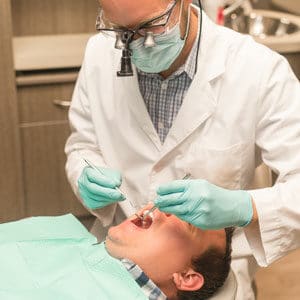

Understanding Oral Cancer Risks
The development of oral cancer is on the rise. When detected early, most oral cancers respond favorably to treatment. The risk of developing oral cancer increases fivefold with smoking, two and a half times with excessive alcohol use, and thirty-two times in the presence of a persistent HPV (Human Papillomavirus) infection.
During examinations, the dentist inspects all tissue in your mouth, including your tongue, lips, and cheeks. They check for any abnormalities and feel for unusual lumps or bumps, making recommendations for follow-up if necessary. We can also perform a salivary screening for active HPV infections. Regular screenings and lifestyle changes can help reduce your risk of developing oral cancer.
Lasers in Dentistry: Modernizing Dental Care
Dentists have used lasers for several years, and they offer additional benefits when combined with regular Seattle dental cleaning or gum disease therapy. Our hygienists can perform specific procedures that reduce gum disease risk or enhance healing if you need gum therapy.
LASER TREATMENT FOR GUM HEALTH
A procedure involves emitting thermal light energy through a small fiber optic tip placed between the teeth and gums. This energy vaporizes harmful bacteria at or below the gum line known as biofilms.
Biofilms directly relate to an increased risk of developing gum disease—a serious infection affecting the supporting bone. During hygiene appointments, hygienists disrupt biofilms to reduce the risk or severity of periodontal disease but cannot eliminate bacteria without using lasers. Destroying these bacteria reduces inflammation in gum tissue and keeps your gums healthier between visits.
There are no known side effects to laser decontamination. Most patients do not report any sensation during or after the use of the laser. Occasionally, patients will describe a warm, tingling sensation felt during the procedure. Laser decontamination takes approximately 5-10 minutes to complete, and the entire mouth is treated at one time.
The laser uses light energy that harmful bacteria absorb into their pigmented cell walls, vaporizing them. The bacteria in our mouths that do not contribute to inflammation typically lack pigment in their cell walls and are thus unaffected in the same way.
Dental professionals now have access to this technology by using a laser specifically designed to treat the gums. Due to the advances in the production of these dental lasers, our office now has the availability to offer laser decontamination. We are happy to treat our patients with an elevated level of care that is not only supported by years of research but also affordable.
Although the laser kills millions of harmful bacteria at your hygiene appointment, the bacteria will begin to multiply again over time, and will eventually be back to their original levels in a few months.
For this reason, we recommend laser decontamination be included every time you see your hygienist. For some patients with a history of periodontal treatment, that is every 3 months. You may be thinking to yourself, “If the bacteria just grow back, what’s the point?”.
One of the most important factors in obtaining optimal oral health and control of periodontal disease is your body’s ability to fight off these harmful bacteria.
While we cannot kill the bacteria forever with a single use of the laser, completing it at each appointment allows us to maintain a consistently lower level of bacteria, giving your immune system the chance to keep your body healthier.
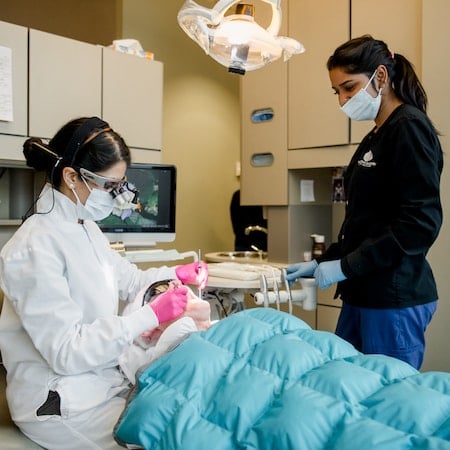
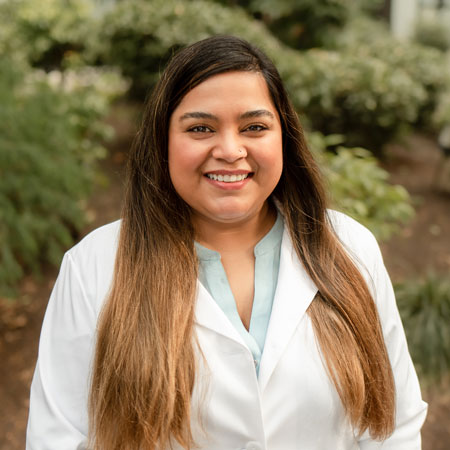
LASER ASSISTED PERIODONTAL THERAPY
Laser Assisted Periodontal Therapy uses thermal light energy emitted through a small fiber optic tip between the teeth and gums to vaporize harmful bacteria at or below the gum line.
Active periodontal disease results from this bacterial infection causing breakdowns in the gums and bone surrounding the teeth. Typically, infected tissue is removed through curettage during gum therapy—a non-surgical procedure performed by your dental hygienist under local anesthesia.
There are no known side effects to incorporating the laser into gum therapy. Most patients report no discomfort during or after the use of the laser. Our team utilizes local anesthetic for most laser-assisted periodontal therapies. We also recommend applying vitamin E oil after the therapy to provide a lubricant barrier and promote healing.
Dental professionals now have access to this technology by using a laser specifically designed to treat the gums. Due to the advances in the production of these lasers, our office now has the ability to offer laser-assisted periodontal therapy as part of our standard of care.
We happily treat our patients with an elevated level of care that is both research-supported and affordable. How often should you perform the laser treatment?
Although the laser kills millions of harmful bacteria during the procedure, the bacteria will multiply again over time, returning to its original levels over the next several months.
For this reason, we recommend including laser decontamination therapy every time you visit your hygienist. For some patients with a history of periodontal disease, this may be every 3 months. One of the most important factors in obtaining optimal oral health and controlling periodontal disease is the body’s ability to fight off these harmful bacteria.
Incorporating laser bacterial reduction into appointments following initial gum therapy keeps the bacteria at a lower level, giving the immune system a chance to keep the gums healthier.
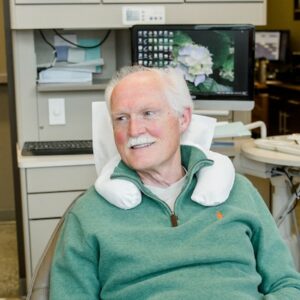
How often should I clean my teeth?
The Academy of General Dentistry recommends seeing the dentist for a check-up and cleaning at least twice a year. Your Seattle dentist may recommend you visit more often depending on your specific situation and risk of disease. Some conditions such as diabetes, heart disease, or pregnancy may require more frequent cleanings to keep you and your mouth healthy.
Will my insurance cover my check-up appointment?
Most insurances cover the procedures completed at a check-up and cleaning appointment. Our team of insurance coordinators will help you navigate through your specific insurance benefits and provide you with an estimate of costs should there be a remaining balance after the insurance payment.

